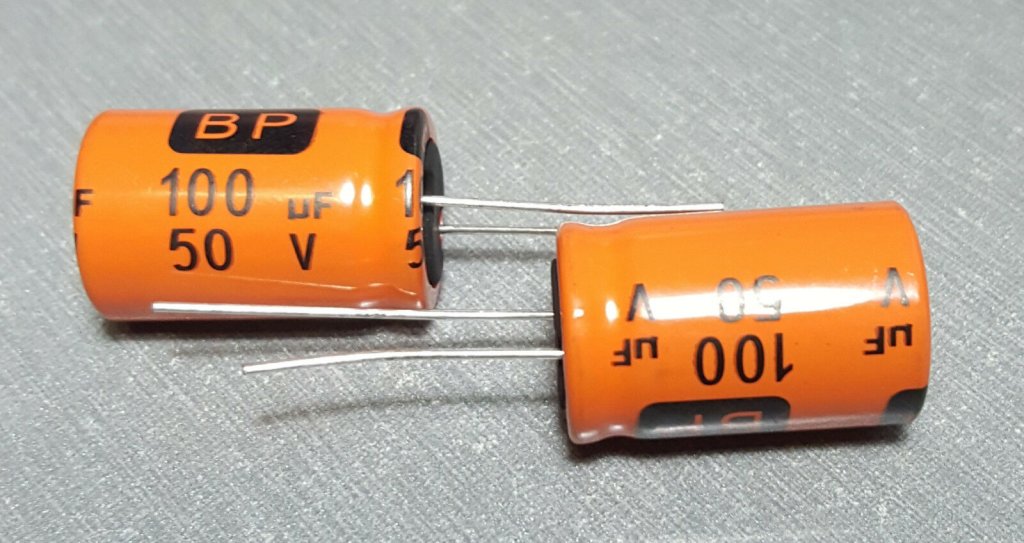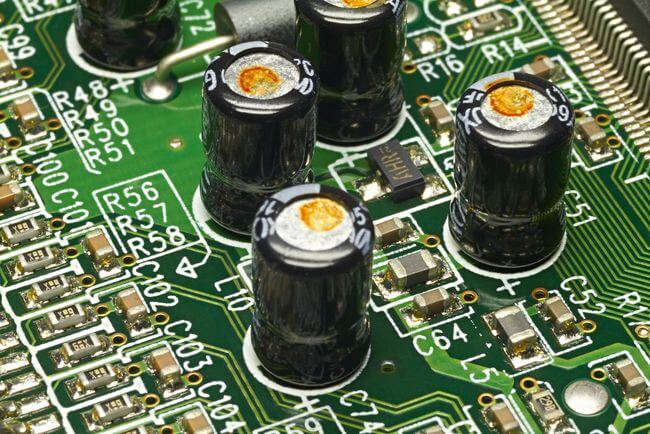Capacitors on PCBs are one of the most critical components of electronic circuits, but how do they work? Understanding the essential tasks these tiny components are accomplishing when trying to sort out issues of noise interference, power fluctuations, and signal timing can make quite a significant difference.
This article brings an easy-to-understand guide regarding the critical roles of PCB capacitors. Whether you’re a hobbyist or an engineer, you’ll find clear explanations and practical insights to help you optimize your circuits.
Let’s get it started.
What are PCB Capacitors

A capacitor is one of the essential elements of electronic circuits, and its definition usually entails the essential role of storing and releasing electrical charge. A capacitor consists of a pair of conductive plates, separated by an assumption material known as a dielectric.
When a voltage is added across the plates, an electric field would be able to be set up, enabling the capacitor to store some energy in the form of an electric charge.
It could draw on this charge whenever required, thus providing a steady flow of power or smoothing out the fluctuations in the circuit.
PCB capacitors are specifically designed for use on printed circuit boards. They are shaped and sized according to cramped layouts and complex designs of PCBs to perform effectively and ideally in numerous electronic device structures.
Designers can achieve reliable enough filtering, decoupling, energy storage, power supply smoothing, and signal timing through the use of PCB capacitors and, therefore able to enhance the functionality and stability of electronic systems.
Functions of PCB Capacitors
Here’s what PCB capacitors do:
- Filtering
Filtration of unwanted high-frequency noise in power supplies and signals is one essential function of PCB capacitors. This interfaced noise might cause functional problems for electronic parts or even break down with continuous use.
In filtering out this noise, PCB capacitors keep these signals clean, thus making sure that things flow well.
- Decoupling
PCB capacitors perform the vital function of decoupling. In this, they separate supply connections to one part of a circuit from all others.
This practice is also necessary to ensure flawless and resilient operation of such essential components. The capacitors are generally put close to the ICs they are there to protect to work best.
- Energy storage
Another key role of PCB capacitors is storing energy. They act as temporary power sources for circuits with changing power needs. This helps keep the power supply steady, which is important for devices that need a consistent power flow.
- Power Supply Smoothing
PCB capacitors smooth out the AC component of the determined fluctuation of the supplied power; this fluctuation is also known as a ripple.
That might otherwise leave a circuit rough and tumble; the shaping of these ripples leads to a stable power supply, which is needed for the assurance of proper running of electronic devices.
- Signal Timing
Lastly, PCB capacitors can be used to time signals through a circuit. These kinds of capacitors charge and discharge at a given rate in controlling exactly when and how often the pulses and signals take place.
This is especially important in such applications as clocks and timers, where the issue is exact timing. The capacitors, therefore, help synchronize the electronic systems in conducting their functions in the best way possible through regulation of the timing of the signals.
Now, let’s discuss the types of PCB capacitors available in the market.
Types of PCB Capacitors
There are several types of PCB capacitors you may use for your needs. Some of the most common are:
1.Ceramic Capacitors
Small ceramic capacitors are very popular and available for most applications. They have relatively higher capacitance in small sizes, which is suitable for filtering and decoupling higher frequencies.
Unfortunately, they are poorly affected by temperature and voltage instability.
2.Electrolytic Capacitors
Electrolytic capacitors have a huge capacitance within a small outline, capable of both energy storage and power supply smoothing equally.
They have more giant footprints in their sizes, higher ESR, hence affording them efficiency, and, therefore, they are limited in life span.
3.Tantalum Capacitors
Tantalum capacitors are highly compact and can have very high capacitance, both of which are pretty effective for decoupling and filtering. Although they are more expensive and somewhat restricted in voltage, it is their electronic properties of reliability and performance that put them as value-added components in some applications.
4.Film Capacitors
A film capacitor is characterized by excellent stability and low ESR, preferable to most high-frequency filtering and timing circuits.
Accordingly, these parameters may include a larger footprint and a lower nominal capacitive value compared to other types, though their reliability is pretty good.
5.Supercapacitors
Supercapacitors have substantial capacitance, which is more applicable in applications requiring short-term energy storage.
In applications where a significant quantum of energy has to be stored and delivered quickly, supercapacitors find use.
Now you know the basics of PCB capacitors, it’s time to learn how you can choose the right PCB capacitor for your project.

Choosing the Right PCB Capacitor
Here’s how you can choose the right PCB capacitor:
Capacitance
Capacitance is the amount of electrical charge a capacitor can store. Choosing the right capacitance depends on your circuit’s needs. Make sure to select a capacitor that matches the required capacitance for optimal performance.
Voltage Rating
The voltage rating indicates the maximum voltage a capacitor can handle without getting damaged. Ensure that the capacitor’s voltage rating is higher than the maximum voltage it will encounter in the circuit.
Tolerance
Tolerance is the acceptable variation of the capacitor’s value from the stated capacitance. Therefore, smaller tolerances yield better performances, particularly in sensitive applications.
Equivalent Series Resistance (ESR)
The ESR is the equivalent series resistance that happens within the capacitor due to high frequencies and can appreciably affect its performance. A lower ESR is always desired, as this is a filtering and decoupling application to achieve a better performance ideality.
Equivalent Series Inductance (ESL)
The ESL is the internal inductance of the capacitor. This is important since it may impact the performance of the capacitor at high frequencies. Low ESL is desired for high-speed-circuit operations for efficient signal traveling.
Temperature Rating
Temperature rating indicates the range of temperature in which the capacitor can perform effectively. Pick a capacitor with a temperature rating matching its level of reliability in the circuit condition.
Package Size and Footprint
Package size, footprint—refers to the physical size of the capacitor and the degree of space it has to occupy in a PCB layout. Ensure the capacitor fits within the available space in your design on the PCB.
Cost Considerations
Match your performance needs against your budget. While the higher-performance capacitors might bring a higher price, they might be a critical part of your essential applications. Always judge cost from the point of view of the returns the particular capacitor will give in your specific use.
Placement and Layout Guidelines for PCB Capacitors
Here are some best practices for placing and routing PCB capacitors in PCB design:
1.Place Decoupling Capacitors Close to ICs
Decoupling capacitors should be placed as close as possible to the integrated circuits that they are filtering. This reduces the length of travel of noise and effectively reduces the interference while maintaining the integrity of the signal.
2.Use Short and Wide Traces for Power and Ground Connections
The power and ground connections can be done with a short and wide trace. The Equivalent Series Inductance (ESL) of the capacitors is brought there by a minimum. This would maximize performance for the intended high frequencies.
Shorter and broader traces will reduce resistance and inductance to maintain correct power delivery and decrease noise.
3.Minimize Via Usage in Power and Ground Planes
When routing capacitors, minimize the use of vias in power and ground planes. Vias can introduce additional inductance and resistance, which can degrade high-frequency performance. Keeping power and ground paths direct and uninterrupted helps maintain the effectiveness of the capacitors.
4.Group Capacitors by Function
Try to group several capacitors in terms of purpose—for decoupling, filtering, or energy storage. Clustering capacitors for functional purposes can help simplify the complexity of the scheme and board.
It also enables easier handling of various capacitors’ roles and helps hold the capacitors at the exact location most effective for their assigned functions.
Troubleshooting Common PCB Capacitor Issues
PCB capacitors can encounter several common issues that may affect circuit performance. Here’s how to identify and address them:
Capacitance Drift
Due to aging, temperature changes, and environmental factors, the value of capacitance shows a gradual drifting occurring in the value. This could only be detected in the quality through:
- The current capacitance value can be checked using a capacitance meter and compared to the original value.
- Look at any performance dips of the circuit where changes in circuit capacitance might be indicated.
If some of these drifts in capacitance are noticed, the replacement of these capacitors can be the only solution for the circuit to work normally again.
Open Circuit
An open circuit is a defective condition of a capacitor by losing the capacitance in storing the charge. This may be attributed to many things, including abnormalities in the manufacturing process, physical damage, or wear out through exposure. To identify an open circuit:
- Test the capacitance with a meter: an open circuit shows a markedly low value or no capacitance.
- Check for circuit malfunctions that might be caused by the absence of the capacitor’s function.
A failed capacitor must be replaced to solve an open circuit problem best.
Short Circuit
A short circuit in a capacitor happens when there’s an internal short within the component, causing it to overheat or malfunction. This can result from manufacturing defects or physical damage. To identify a short circuit:
- Measure the capacitor’s resistance with a multimeter; a shorted capacitor will show very low resistance.
- Look for signs of overheating or unusual circuit behavior that might indicate a short.
Replacing the shorted capacitor is crucial to prevent further damage to the circuit.
Bulging or Leaking
Physical damage, such as bulging or leaking, indicates internal failure in a capacitor. This is often caused by excessive voltage, overheating, or aging. To identify physical damage:
- Visually inspect the capacitors for any signs of bulging, leaking, or discoloration.
- Check for any related performance issues in the circuit.
Immediate replacement of bulging or leaking capacitors is necessary to avoid further circuit damage and ensure safety.
By regularly inspecting and testing your PCB capacitors, you can catch these common issues early and maintain the reliability and performance of your electronic circuits.
Conclusion
In conclusion, PCB capacitors are crucial for improving electronic circuits. They help by filtering noise, stabilizing power, and ensuring signals work correctly.
Whether you’re new to electronics or an expert, understanding and using PCB capacitors effectively will make your projects more reliable and efficient.





